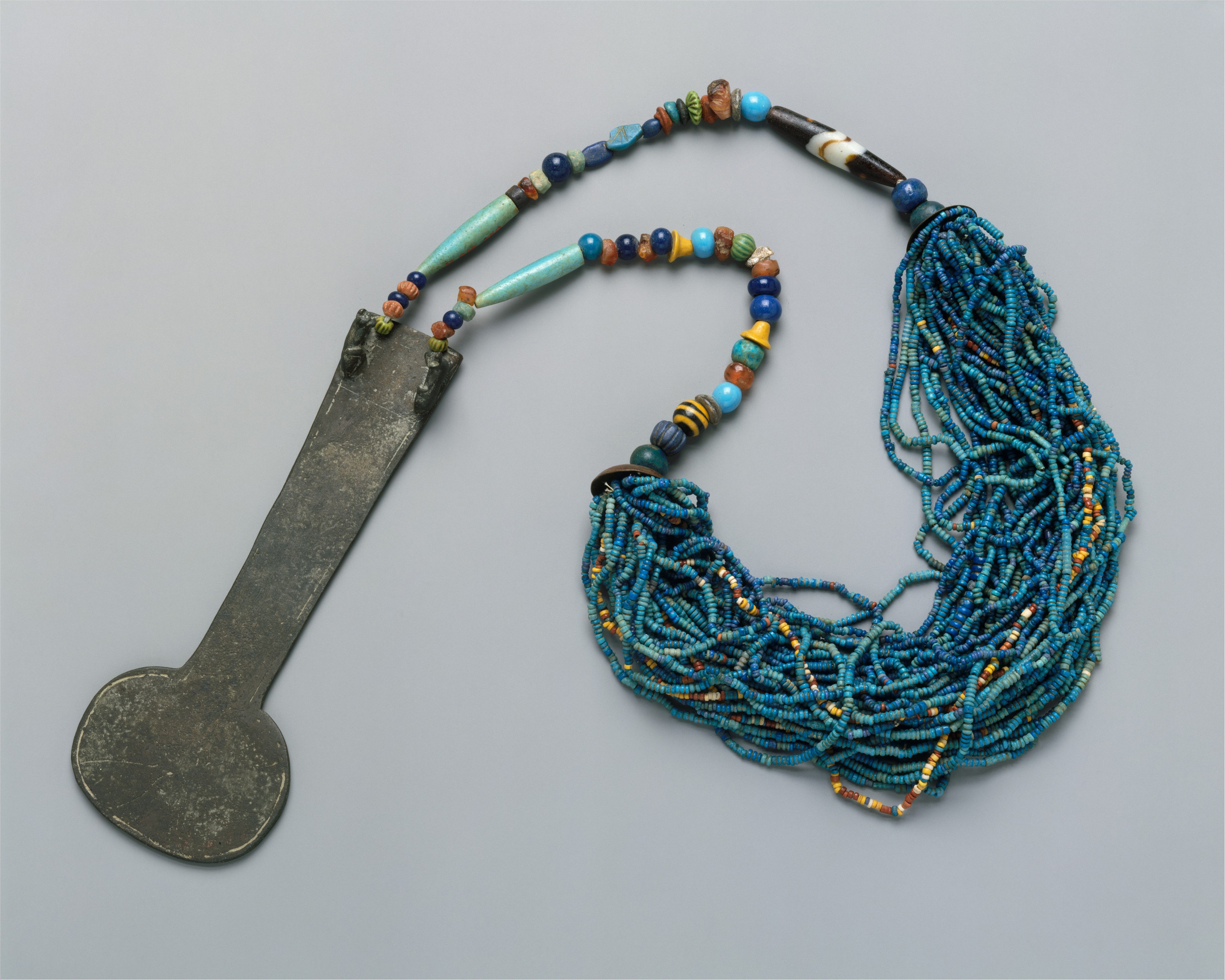Menat on:
[Wikipedia]
[Google]
[Amazon]

 In
In
Petrie Museum Collection - search for ''menat''
/ref> It was often inscribed or bore depictions of deities associated with Hathor.

ancient Egyptian religion
Ancient Egyptian religion was a complex system of Polytheism, polytheistic beliefs and rituals that formed an integral part of ancient Egyptian culture. It centered on the Egyptians' interactions with Ancient Egyptian deities, many deities belie ...
, a menat (, ) was a necklace closely associated with the goddess Hathor
Hathor (, , , Meroitic language, Meroitic: ') was a major ancient Egyptian deities, goddess in ancient Egyptian religion who played a wide variety of roles. As a sky deity, she was the mother or consort of the sky god Horus and the sun god R ...
.
Operation
The menat was held in the hand by its counterpoise and used as a rattle by Hathor's priestesses. It was also worn as a protectiveamulet
An amulet, also known as a good luck charm or phylactery, is an object believed to confer protection upon its possessor. The word "amulet" comes from the Latin word , which Pliny's ''Natural History'' describes as "an object that protects a perso ...
, particularly by Apis bulls.
Parts
The menat typically included anaegis
The aegis ( ; ''aigís''), as stated in the ''Iliad'', is a device carried by Athena and Zeus, variously interpreted as an animal skin or a shield and sometimes featuring the head of a Gorgon. There may be a connection with a deity named Aex, a ...
attached to beaded strings. The other ends of the strings were tied to a counterweight
A counterweight is a weight (object), weight that, by applying an opposite force, provides balance and stability of a machine, mechanical system. The purpose of a counterweight is to make lifting the load faster and more efficient, which saves e ...
that dangled on the wearer's back. The aegis was often made of faience
Faience or faïence (; ) is the general English language term for fine tin-glazed pottery. The invention of a white Ceramic glaze, pottery glaze suitable for painted decoration, by the addition of an stannous oxide, oxide of tin to the Slip (c ...
, but other materials such as leather
Leather is a strong, flexible and durable material obtained from the tanning (leather), tanning, or chemical treatment, of animal skins and hides to prevent decay. The most common leathers come from cattle, sheep, goats, equine animals, buffal ...
and bronze
Bronze is an alloy consisting primarily of copper, commonly with about 12–12.5% tin and often with the addition of other metals (including aluminium, manganese, nickel, or zinc) and sometimes non-metals (such as phosphorus) or metalloid ...
were also used./ref> It was often inscribed or bore depictions of deities associated with Hathor.
Purpose
The necklace was meant to ensure good luck and fortune and to protect against evil spirits. It was also worn for protection in theafterlife
The afterlife or life after death is a purported existence in which the essential part of an individual's Stream of consciousness (psychology), stream of consciousness or Personal identity, identity continues to exist after the death of their ...
and is often found buried with the dead, given as a grave gift since Ramesside times. It was expected to foster fruitfulness and good health for women, and for men it signified virility.
Footnotes
References
* * * * Erman, Johann Peter Adolf, and Hermann Grapow, eds. 1926–1953. ''Wörterbuch der aegyptischen Sprache im Auftrage der deutschen Akademien''. 6 vols. Leipzig: J. C. Hinrichs’schen Buchhandlungen. (Reprinted Berlin: Akademie-Verlag GmbH, 1971.) * * *External links
* {{Ancient Egyptian religion footer, collapsed Egyptian artefact types Hathor Egyptian amulets